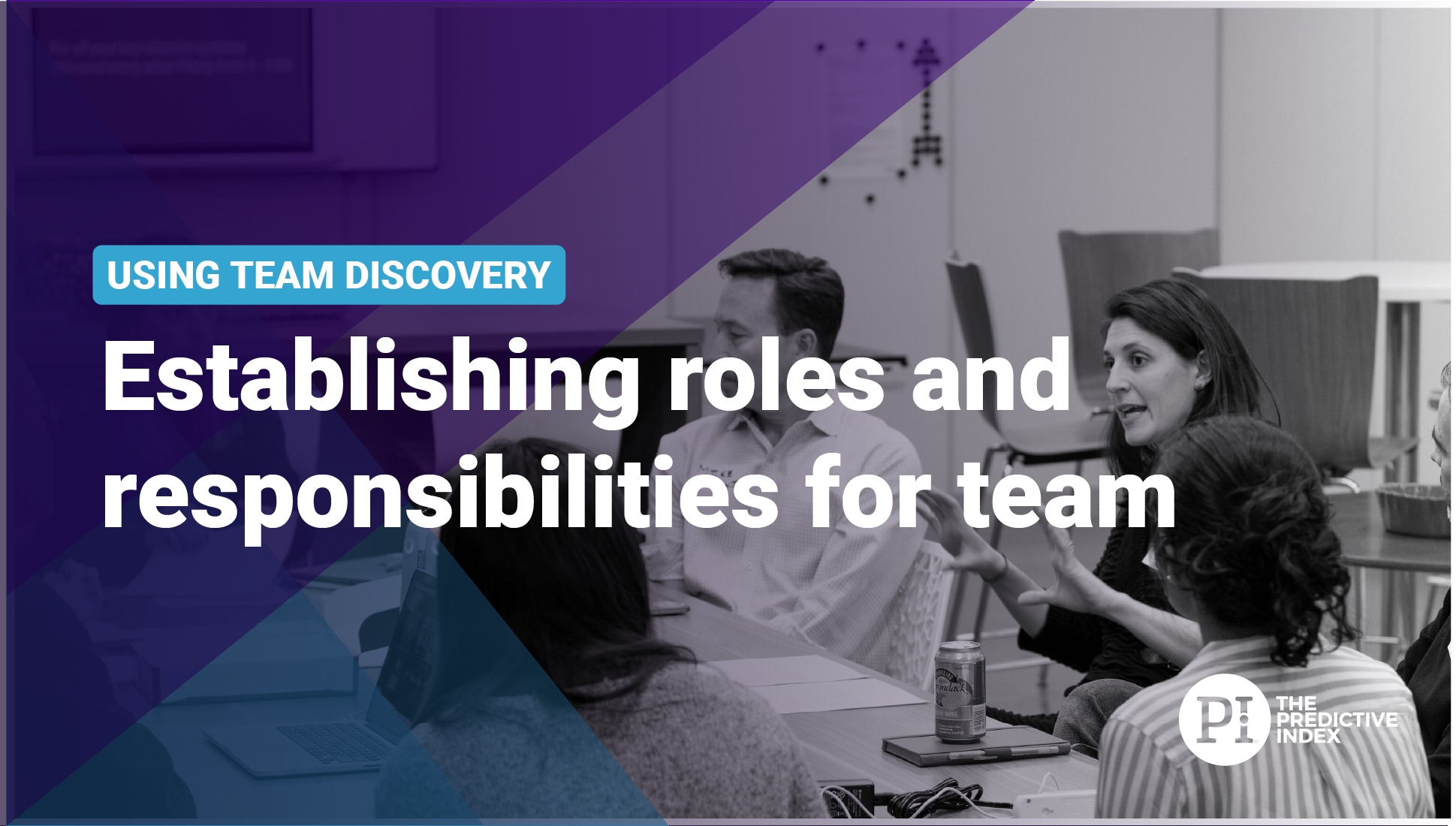Accountability. It’s key to achieving business results, and yet many business leaders fail to hold employees accountable.
According to our recent CEO Benchmarking Report, holding people accountable is difficult—even for leaders who head up companies. Eighteen percent of the CEOs we surveyed cited “holding people accountable” as their biggest weakness. Additionally, 15 percent struggle with “letting go of underperformers.”
When done right, enforcing accountability leads to business outcomes and increased confidence for the employees who followed through.
When accountability is lacking, performance, company culture, and morale suffer. When employees are not held accountable for missed deadlines, bad behavior, or poor performance, a leader’s credibility is damaged and loyalty from their team wavers. This ultimately impacts the leader’s ability to inspire high-performing, winning teams.
Join 10,000 companies solving the most complex people problems with PI.
Hire the right people, inspire their best work, design dream teams, and sustain engagement for the long haul.
Why we struggle to hold employees accountable
If accountability is so important to success in business, why do we struggle with it?
1. We’re not accountable for our own behaviors or deadlines.
When leaders fail to meet deadlines themselves, they’re not modeling the kind of behavior they want to see from their team. Let’s be honest: It’s hard to hold someone to a standard you’re not willing to hold yourself to.
In the same vein, we might be inconsistent in holding people accountable. If you only occasionally hold your employees accountable, how do you justify the times when you are exercising accountability? In addition to employees feeling unfairly treated, a manager who’s inconsistent in holding their team members accountable could be accused of bias.
2. We don’t set clear expectations we can hold people to.
A common reason we don’t hold employees accountable is we haven’t set clear expectations. As a manager, you’re ultimately responsible for the success of your employees. If an employee is not clear on their assignment, they’ll struggle to be successful. If employees are not clear on the consequences for certain behaviors, such as arriving late to work, it can be difficult to enforce those consequences.
3. We want people to like us.
The desire to be liked by other people is natural. It’s part of the human makeup. But too often we allow this need for belonging and acceptance to infringe upon our management—especially when it comes to holding others accountable. We worry what our direct reports will think of us, and we shy away from the tension of confrontation. This can be especially true for managers who have high extraversion (i.e., a natural drive for social acceptance) or low dominance (i.e., a natural drive to have harmony). This conflict avoidance makes holding team members accountable virtually impossible.
4. We apologize when we hold people accountable.
“I’m sorry to bother you, Susan, but do you have that report for today’s stakeholder meeting?”
How often do you apologize for following up and ensuring that tasks are completed according to deadlines? This is not an inconvenience to your employees; this is an expected part of management. It’s your job to make sure your team is completing quality work by the date it’s due.
We recently talked with Craig Weber, consultant and author of “Conversational Capacity“, about holding employees accountable. Here are his thoughts:
How to hold your employees accountable
Fortunately, you can turn this accountability wagon around in your business. Here are some practical ways you can increase accountability on your team:
Set goals and clear expectations.
It’s hard to hold someone accountable to a standard that hasn’t been set. Create clear goals and expectations in the form of SMART goals, performance plans, or an employee handbook that outlines rules and guidelines for employee behavior. Once goals and expectations have been established, communicate them clearly and put them in writing. Having your expectations in writing, such as in an email or handbook, will allow you to easily reference the conversation should an employee fail to deliver on expectations.
Understand how your employees are wired.
In addition to setting clear expectations, it’s important to make sure those expectations are communicated to and understood by your direct reports. This is where collecting critical people data—a component of talent optimization—comes into play.
Using the results of a talent optimization tool, such as the PI Behavioral Assessment™, you can learn how your employees are wired to receive information. For example, if they have a high extraversion drive, they might need some time to talk it out and make sure they understand what’s being asked of them. If your employee has a high formality drive, they may need detailed instructions to ensure they know what process to follow when executing a task.
Be prepared to give feedback.
You will, at some point, need to hold someone accountable. This is simply a part of people management. The good news is employees want your feedback. They want to know where they stand. They want to know what they’re doing right and what needs improvement.
When giving feedback, focus on the behavior, not the employee; be specific; offer corrective action; and let them know the consequences of continuing said behavior. Here’s an example: “John, our company policy is that employees must arrive for work by 9 a.m. You arrived at 9:10 last Tuesday, 9:15 on Monday, and 9:05 today. I need you to arrive at or before 9 a.m. If you continue to be late to work, I’m afraid we’ll have to loop HR into our conversation.” (This is, of course, assuming that there are no legally valid, extenuating circumstances for being late).
Take the employee accountability quiz.
Stay on top of it.
Pay attention to what your employees are doing and whether they’re upholding the standards you set. While most managers are working double-time performing their job duties and managing direct reports, management can’t take a backseat. To ensure consistency in holding employees accountable, and to catch something sooner rather than later, stay on top of what your employees are doing. This doesn’t mean you have to micro-manage. Just pay attention.
Holding employees accountable isn’t easy, but it will make a significant impact on your leadership and business results. Use these tips to streamline the accountability process and make it an everyday part of your leadership.
How PI can help
With PI Design, accountability becomes actionable.
Design gives you access to the tried-and-true PI Behavioral Assessment, along with the all-new PI Team Discovery tool. See what drives your employees at work—not just as individuals, but as a collective unit. Using behavioral data, you’ll be able to visualize and compare the unique strengths and gaps of your employees, and ensure they’re in roles that maximize your team’s potential.
Accountability doesn’t have to be daunting. With PI, you can have candid conversations with your people—and instill confidence in the work ahead.



